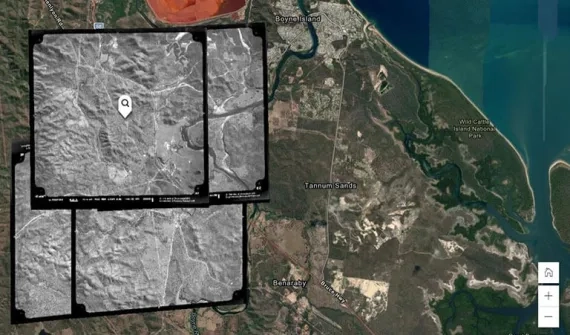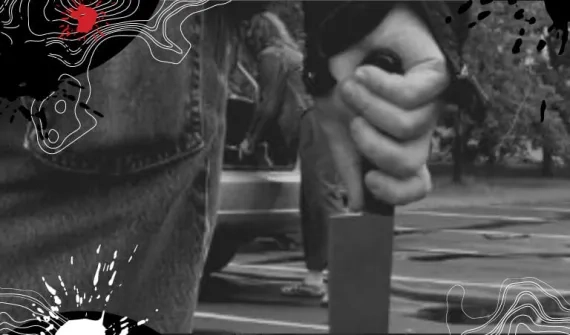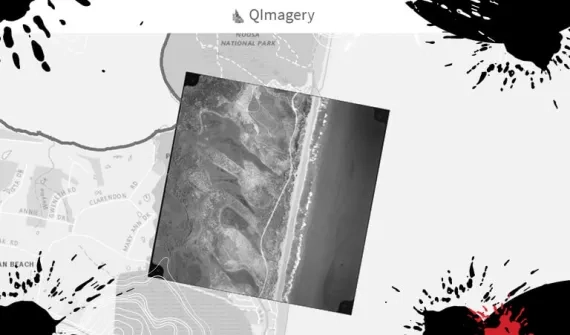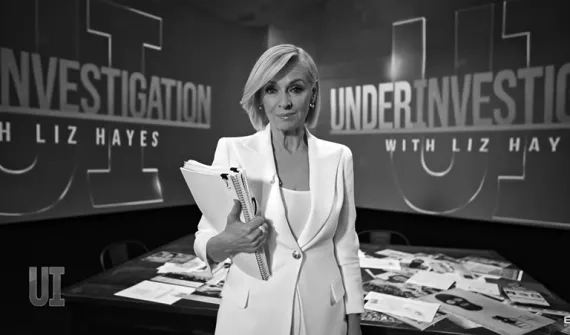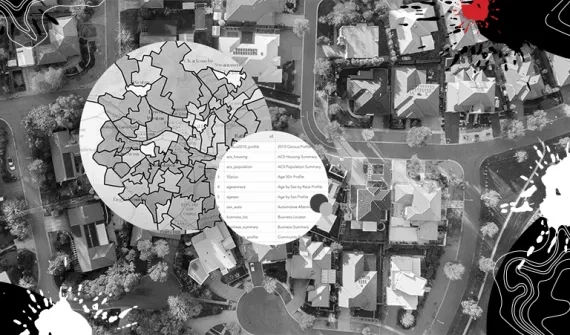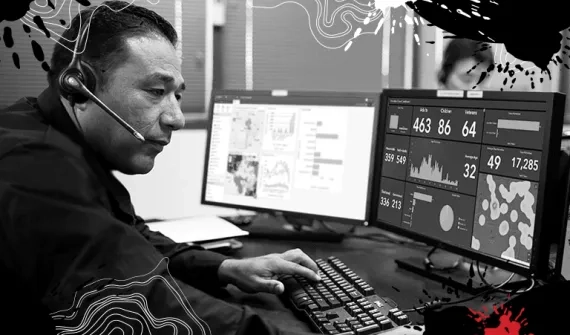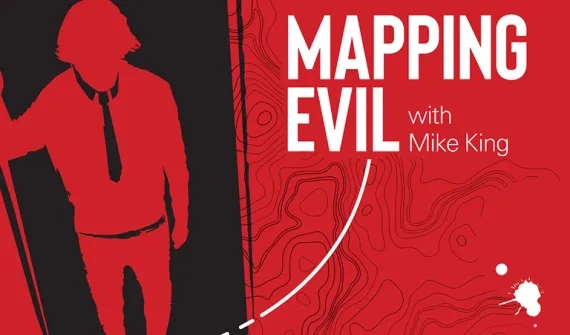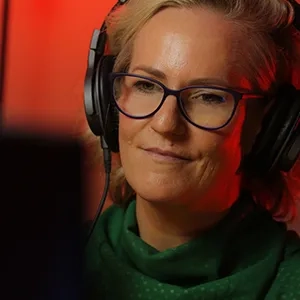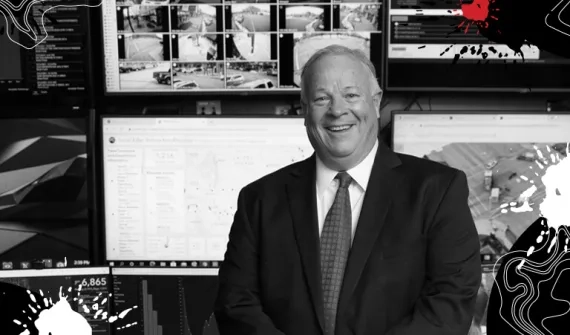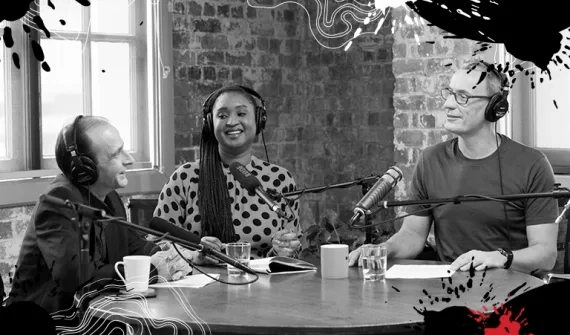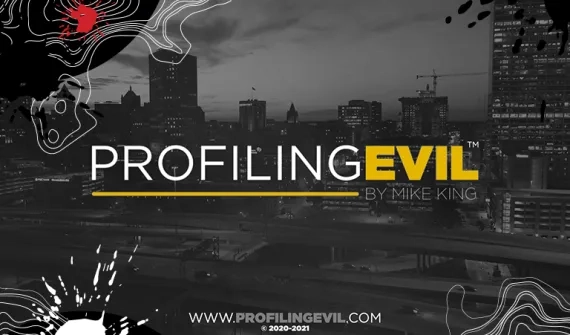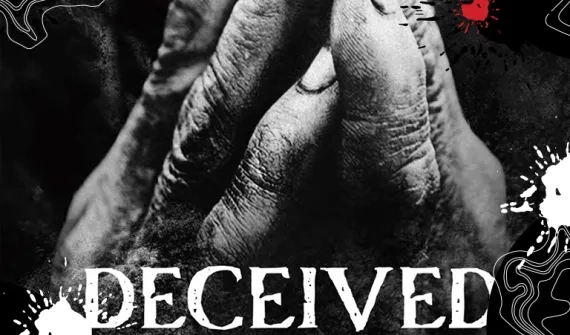When location becomes a liability
For veteran law enforcement specialist Mike King, the element of ‘location’ is one of the most important pieces of the puzzle when it comes to investigating serial crimes. Determining how, when, and why the paths of a predator and victim have intersected is crucial for investigators to understand victimology, which communities are at risk, and even the offender themselves.
In this episode, Mike and Tory examine the crimes of the ‘Real Estate Rapist’, Michael Blake Jensen, exploring how he used the element of location – with almost surgical precision – to trap his victims.
Mike also takes a closer look at the expansive crime scene of the brutal 1967 cold case murder of 21-year-old Mima McKim-Hill. He retraces the likely steps of the killer – debunking the old adage of ‘wrong place, wrong time’ – to reveal the terrifying truth of when location becomes a liability.
All the red flags are coming up and they're realising there's something really wrong here, but again, we never want to assume the worst in people. We think ‘I never go out into the woods and kill someone, so nobody else would either’.
Explore crime mapping tech
Never miss an episode of Mapping Evil – subscribe now.
About the hosts

If you have information about any unsolved crime or suspicious activity, then you can share what you know with Crime Stoppers, without saying who you are or getting involved. Call 1800 333 000 or go to crimestoppers.com.au.
- Click to view the Location, Location, Location transcript
Tory: The following podcast contains content of a highly graphic nature. Listener discretion is advised. The material covered is based on firsthand accounts and publicly available information. In producing this podcast, every effort has been made to show respect to the victims and their families. Support for this episode comes from the country's leading mapping technology and services provider, Esri Australia, to learn more about how Esri tech is making a difference in crime analysis and public safety, head to esriaustralia.com.au/crime.
Mike (voice over): …So he looked for homes that weren't occupied to draw the real estate agent in and have him there by himself where he could assault them.
Tory: The podcast where we learn about some of the world's most appalling crimes…
Mike (voice over): …And he drove around neighbourhoods and looked at the ‘For Sale’ signs so that he could see and pick the next victim.
Tory: And navigate how geography can hold the key to solving them.
Mike (voice over): That's what we would do today with GIS. We would start to look at things like what are the preferential victim characteristics, who are the people that are showing houses or that would be potentially fitting within that preferential victim? And most importantly, was the home occupied or was it an empty cell.
Tory: Episode Three: Location, Location, Location.
Mike (voice over): All predators seem to kind of intrinsically learn how to successfully commit crimes. Their goal is always self-satisfaction and self-preservation.
Tory: I'm Tory Shepherd, and this is Mapping Evil with Mike King – who has spent nearly four decades working in law enforcement. He's a world leader in using mapping technology, the geography of crimes and criminal profiling techniques to track and catch criminals around the world. Today's case has very much come down to location, location, location – and no, you haven't stumbled into a real estate show. Although real estate certainly does play a role. We're looking at sexual predators and how they use location to isolate and attack their victims.
Mike, you've written about the types of sexual predator out there. Could you run us through the four main categories?
Mike: We categorise those as the Power Reassurance rapist, the Power Assertive. The Anger Retaliatory. And then of course, the devil himself – the Anger Excitation rapists. Each of these personality types is very different from the one that precedes it. The thing that I think is interesting in that order is they become increasingly dangerous as we move down that list.
I mean the Power Reassurance is someone who is trying to kind of reassure themselves in their own masculinity. They even believe they're having relationships with the victim in some kind of a wacky way. The Power Assertive though, we see them starting to get a little more aggressive – it's a little more ‘about me’. “I don't care much about the fantasy of actually having a relationship.”
When we start moving into the Anger Retaliatory, this is where we see blitz style attacks and things becoming really violent. In these cases, this is where we see homicides.
But when we get to the devil – the Anger Excitation rapists – it's all about punishment. It's all about penalising the victim. That's what brings this person their sexual satisfaction. A really frightening group of people.
Tory: I think we should just be clear as well, that this is about helping victims. This is about knowing how these predators operate and just how skillful these guys are in picking their targets and the lengths that they'll go to – these are planners.
Mike: Yeah and nobody deserves to be victimized. It doesn't matter whether they've had to take a pathway in life like a sex trade worker or they're involved in narcotic trafficking or addicted themselves. They do not deserve to be a victim and they should be protected. These predators exploit the environment, and they exploit our weaknesses.
What I’ve found to be very interesting about them is that as we watch each of these events unfolding, we can learn so much about their personality, what motivates them and what really gets their motor running. As we do that, we can begin to understand who's responsible – especially for serial crimes.
I often think about painters and I remember hearing a statement that you can only begin to understand the artist once you've really looked over and consumed the art.
Tory: Right? Finding the patterns, seeing how they work. We're going to talk about serial rapist, Michael Blake Jensen.
Mike: He’s what I term to be a Power Assertive rapist – number two in the stack. He was starting to create these attacks where he had a blitz style kind of a way of doing things, but he was progressively becoming more and more violent. In his later assaults, he began focusing on real estate agents.
Tory: Let's talk about real estate agents. This is why the name of this episode ‘Location, Location, Location’ has that double meaning. How did he use that industry?
Mike: It’s interesting, because what we saw is that he started looking for his preferential victim and he was using ‘For Sale’ flyers on homes – where the real estate agent would put a glamour shot of themselves on the front like “contact Susan if you want to see this house”. He drove around neighbourhoods and looked at the ‘For Sale’ signs that were out the front by established real estate companies. But he looked for those that had the photograph of a female – and one that he was attracted to – on the sign. He also looked in the newspaper for advertisements so that he could see and pick the next victim.
Tory: It is kind of extraordinary in hindsight – to think that women put a glamour shot of themselves, the phone number to get them on to invite them to a strange house. Just you and her. I guess they probably had to rethink that situation?
Mike: I don't know if they have rethought it, Tory, because we continue to see that.
Now the thing that was so interesting to me is how methodical he was in this victim selection process. He had a certain look that he liked and he shopped around. He looked for that. Then he would leverage the real estate agent's desire to make a sale and get them with “hey, I just happened to fly into town for a few hours. My company's relocating me here. I want to do a cash buy and I've only got a couple of hours. I can't do anything but meet you at the house right now.”
Tory: I guess he could also use all of that information through real estate to look for somewhere where he could be isolated with these women – not the apartment with the thin walls that you can hear through.
Mike: That's right. He actually went as far as looking at places that geographically would fit a way for him to be successful in this crime. And then he took it even further, Tory. He then started looking for places where he knew that there was no chance that there was a homeowner that would come home. So, he looked for homes that weren't occupied – those were the ones that he was most interested in.
Again, to draw the real estate agent in there, by himself, where he could assault them.
Tory: Shame often plays a part in these people not necessarily coming forward. I was reading that he was quite good at trying to manipulate women into feeling shame about what had happened – but it didn't work forever.
How did they catch him in the end?
Mike: Thankfully one of his victims immediately reported the sexual assault after he left. She provided an excellent description of him, his physical appearance and his vehicle. Moments after that, attempt to locate went out on the radio and a Sheriff's deputy spotted his vehicle and attempted to pull him over. A high-speed chase ensued, and it went on for 30 or 40 minutes through the metropolitan area – a very dangerous chase. Knowing that they had a violent offender, law enforcement couldn't back off. They actually employed – and had enough time to get – police helicopters to help in the chase. Eventually he crashed his vehicle, bailed out of the car, and took off on foot – and a foot pursuit started.
Thankfully, he was running from a canine dog who tackled him to the ground and effected the arrest.
Tory: Do we know how many women he attacked?
Mike: He has led us to believe that there were dozens. We know that there were five or six. He suggested maybe as many as 12 or double that. So we have to just assume it’s somewhere in between him trying to make it much more grandiose than it was, and the reality of what we had. That's 12 or 20 lives that were changed forever.
Tory: It's always sad to think that it's so hard for people to come forward when this has happened. But I guess you could start to pick out that pattern between maybe the houses, the type of real estate agent and really draw a profile of this guy earlier, before this one victim escaped.
Mike: Exactly. In fact, that's what we would do today with GIS. We would start to look at the things like what are the preferential victim characteristics, who are the people that are showing houses or that would be potentially fitting within that preferential victim.
You could put out things from a public awareness standpoint that maybe a male real estate agent in this particular instance, isn't under the risk of assault, unlike a brunette or a blonde haired woman that happened to fit his profile. Beyond that, then we started looking at what were the demographics of the kinds of houses, the areas he picked, and most importantly, was the home occupied or was it an empty cell?
And those kinds of things could also raise risk levels to where maybe we could rethink things – but from an investigative standpoint, they certainly would help us in tying together the multitude of cases that might come, and getting them all attributed to the right offender.
Tory: What are the other sorts of situations that can make a person more vulnerable than they would otherwise be to someone who is scheming like this?
Mike: If we were to look at, for instance, the real estate industry, what we can do is start to put risk mitigation procedures into place. Now, in many real estate offices, before someone goes and shows a home, the intended buyer needs to come to the office where they show legal identification and that's photocopied.
Then there's an agenda of the places that they're going. There's a process of even calling in and saying “we've left home A and are now heading to home B”. Things like that can be put into place to minimise risk. But for all of us in the general population, what we can do is go back and think about some of the things we've talked about, the victim risk continuum.
What are we doing that elevates our risk or starts to minimise our risk, and make sure that we're making decisions that help us stay in that low risk area.
Tory: Yeah, it's really frightening here in Australia, whenever there's a stranger attack on a woman, you hear a lot of women talking about all the things they do daily – like faking phone calls to the boyfriend if they're walking alone down a dark street or putting their keys through their fingers is a sort of makeshift weapon. It's very sad that a lot of people feel they have to do that.
Mike: That's a really important point that I wanted to just jump on top of. Men traditionally, haven't had to think about those things, where women have – and it becomes intrinsic to women.And this is a great reminder for anyone – especially men that might supervise women in positions like this – we have to think about what protects the entire staff. Not how would I think about this situation as a man or as someone who might have more confidence than someone else. We have to think about the lower denominator of a person's personality – some people are very sheepish, they're intimidated by things. We should plan all of our activities with the idea of "what would make the most insecure member of my team feel safe".
Tory: The other thing I was thinking about is, recently, we've put in a system here in South Australia where women can check on their new or old boyfriends – or even partners or husbands – to see if they have a history of violence.
And it's controversial because there are some strict privacy laws. But what struck me with Jensen was that he had this horrendous history of violence – racist violence. So many criminal acts. Are we better now or are there better ways that we can just track and have the authorities be a bit more aware that a guy like this is in a specific area?
Mike: That's a tough one because in the case of Jenson, he was using false identification anyway – it would have thwarted a system like that. People lie about who they are. We see – especially with things like social media – in this disconnected world where we're creating relationships, that people can be anything they want until that first meeting, or even longer that fifth meeting, before we really start to see their personalities emerge.
As wonderful as situations like what you have in Australia are, it still requires us being intuitive, really forward-thinking and transparent. None of this stuff where we get isolated, or are pulled away from our support systems in relationships. Those are all red flags.
Tory: Okay. Mike, time to come down under. We are going to go on and have a look at this cold case of Mima McKim-Hill. She disappeared at age 21 back in 1967. She was sexually assaulted, killed, and her body was dumped about 80 kilometres from Gladstone – which is in Queensland. If we got you over here – because we'd love to do that one of these days – what's the first thing you would do? It’s 1967, what are you going to do to help try and solve this cold case?
Mike: One of the first things I'd want to do is pull up some old aerial imagery and some old maps to kind of see what the highway system looked like. I'd want to see what the residential growth looks like, what the urban sprawl might be through some of these areas, how much of these areas were involved with Mima's case – involved in rural areas versus maybe areas where there might be more traffic.
It's really important to understand these different crime scenes. I'll explain why I call them crime scenes in a moment – but I'd want to understand the locations where she begins her travels. Even in Rockhampton, where she lived in Queensland.
She gets up that morning, and she makes her first trip travelling from her home in her vehicle and makes a stop in Calliope?
Tory: We'll stick with Calliope for now.
Mike: Calliope. Okay. So she makes her first stop in Calliope. In today's travel routes, it would have taken about an hour and ten minutes to make that first trip. My understanding by looking at the old case materials that she was actually going down and was on a business trip.
She was meeting her employer, and her employer had some side business that the employer was taking care of, which kind of slowed down her travel plans it sounds like. From Calliope, she then had about a 10-minute commute to Benaraby. This is where things really start getting a little bit muddy and where we start thinking about things.
Because when we look at these crime scenes, what we want to do is look at three different locations in a criminal event. What's the initial contact site? That's the first in series of crimes. The first thing that we look at and somewhere between Calliope and Benaraby…
Tory: We can call it Benno if you want.
Mike: Benno okay. Somewhere between those two locations some kind of event happens. I believe it's that initial spot where she and the offender come into contact. She may not have even known that this contact occurred – but somehow right in there, they come together. Now, there are some reports that suggest that there was a broken-down truck on the side of the road.
What was so interesting to me is that her vehicle ends up in Benno and yet her body ends up 80 kilometers to the west near Collard Creek. So, we start to think about two other kinds of crime scenes. The second would be the actual crime scene. Where did the kidnapping or the assault or the murder take place? And that could be two or three different locations, classified as the crime scene. And finally, we know that her body was recovered near Collard Creek to the west – that is the disposal site.
I'd want to travel all of those. We used to say when looking at these unsolved cases that we need to go and vicariously ‘roll in the dirt’ – we need to experience what these people would have experienced. See what the traffic was like, see what kind of stressors this would have created for somebody – because it appears that it might've been an opportunistic kind of an assault.
Tory: Listeners – if, like me, you are not from Queensland, not familiar with the area and really bad at visualising these things, we're going to get a map up on the website at mappingevil.com.au so you can go and have a look at how things could have intersected and ended up so badly.
Mike, there's also a theory about a truck driver, Erich Johann Seefuss. You mentioned the truck, but tell us a bit more about this truck driver, whose name crops up in a few reports about this murder.
Mike: Yeah. I found that really interesting. As we discussed that, it seemed like there's some weight to this.
This is an interesting theory because based on eyewitness testimony, the truck that Seefuss was driving remained on the highway for what could have been several hours. Now, what a great alibi for Seefuss. If in fact he's responsible for anything, there's really no mention of anyone seeing Seefuss near the truck, under the hood, working on it, flagging down people trying to get a ride into Benno or anything else. All we know is that there are reports that the vehicle sat there for a couple of hours.
Now, it could have been that this guy was asleep on the front seat of the truck, waiting for a coworker to come or a repair truck to come. But some people have theorised that Seefuss may have flagged down Mima and then took her and of course took her vehicle.
Now, this is an interesting theory and, to me, has some weight to it. Not necessarily that it was Seefuss, but that somebody came across that area and came across her. And it was either her stopping to help someone or someone stopping her, but they come together in place and time.
From there, then we have a real interesting challenge from my standpoint in an investigation. How do we then explain how she ends up 80 miles west. Her car ends up, I dunno, 10 kilometers Southeast and Seefuss's truck remains in one position. And as we start to look at these kinds of things, geographically, we can start to theorise what may have happened. I don't know if you're interested but I have a couple theories.
Tory: Hit me up. I was just thinking, my brain is so attuned now to having GPS and being able to plot – for example, most truck drivers would now be tracked by GPS. But back then, not so much. So you've ‘rolled around in the dirt’, right? That's your thing.
Mike: There we go. Vicariously ‘roll in the dirt’.
Tory: You've plotted this all out on a map and we're trying to work out where this intersection has happened between the victim and the perpetrator. So what's possible?
Mike: We talk about possibilities and probabilities. So we're going to talk possibilities first. One possibility is that with this broken-down vehicle, Mima – a young, naive young woman at this point – slows down to offer aid. And this offender – if it is the driver of the truck – immediately assaults her, takes her at that point and then has to dispose of her some way. So, let's assume that there's an assault on Mima at the spot.
He then has to somehow get her to Collard Creek to dump her body off. One explanation could be that he loads her up in her vehicle and takes her out there, dumps her off, returns the vehicle to Benno – which is only a short distance, he could have walked that in 20 or 30 minutes. And he then walks or hitchhikes and gets back to his truck.
Now that leaves us with the possibility – and the beauty of things like this podcast many years later even, is that somebody was travelling on that road that day that probably saw something. Maybe it's someone that never had the courage to step up before. Maybe they never even thought about it. But someone gave him a ride back to his truck or saw him walking or saw him in her car. All of those things become possibilities.
The second scenario is he kidnaps Mima. Then he takes her the 80 kilometers to the west near Collard Creek, where he assaults or murders her, and then dumps her body, returning her car to Benno in hopes of making it look like she actually made it that far, dumping her car off and then walking his way back.
So that's scenario two. Now we have to somehow get these people all in the right places.
The third scenario would be that he gets control of this young woman, either he kills her and puts her inside of his truck, takes her car to Benno and then takes her by truck out. But that's where we'd want to know what his delivery patterns were and where he was going after, and it would be interesting to see if even in 1967, if there were records for that repair that could give us some indication of what direction the truck went after it was repaired on the side of the road.
Tory: And of course, there’s always another scenario – that he was simply in the wrong place at the wrong time.
Mike: Absolutely Tory – by all accounts this is still an open case, and there are many questions to be answered and if you have any information folks, please contact authorities.
Tory: So, is there something inherently risky about the Outback or have I just watched too much Wolf Creek?
Mike: Oh absolutely. In fact, I remember watching a little clip on that particular show. As the kids are sitting around the fire pit in the night with this suspect who is creeping them out and all the red flags are coming up and they're realising there's something really wrong here. But again, we never want to assume the worst in people. We think “I never go out into the woods and kill someone so nobody else would either”.
We have to kind of change our thinking of what can we do to reduce our risk. And you know what, the Outback is the location where things can really happen without an audience. It's really important to keep in mind that the further away from civilization we get, the less chance there is that somebody's going to stumble across our location. There's going to be enough concern for a predator that someone could be driving by – that they could be discovered and exposed.
In addition to that, if it does happen in the back country, discovering those crime scenes is incredibly difficult. Even though those are opportunities for crimes, for the most part, it is really difficult to get there in a timely manner where you could recover evidence or hopefully prevent an assault like that.
Tory: Indeed. There's such a striking contrast isn't there between Jensen – who was so strategic and methodical in choosing his victims and choosing his location – and then whoever this was, who just took advantage of the location and the timing and the fact that they crossed paths. Are they different kinds of predators – the opportunistic versus the strategic?
Mike: They might be the same kind of predator as far as their core motivation of having dominion and power and control over someone, or a certain kind of sexual predator. What oftentimes is my first thought though, is that someone who is out and just becomes an opportunistic killer or an opportunistic sexual abuser – or any kind of opportunistic crime – is generally, they're going to be a little less organised. They haven't really planned out or thought about ‘what are my escape routes? What are my risk levels that someone might find me, see me, or recognise me?’
On the flip side, when we see someone like Jensen – who was carefully figuring out which house he was going to go to, what, what his plan was going to be – those kinds of predators that are not opportunistic are much harder to catch because they are so good at putting the whole plan together. They fantasised about it and most likely, they've committed those kinds of crimes and had failures that they fixed over time. They become better at their trade of being a criminal and a predator just based on their experience.
Tory: We talked about some of the measures you could take to make sure that you don't fall prey to someone like Jensen, but if you're Mima and you live outside the main city, you have to get around – you've got to drive from place to place. Is there anything in the victimology continuum… that's what you call it isn't it?
Mike: Yes.
Tory: From being low risk to being high-risk. Is there anything she could have done to bring down her risk do you think?
Mike: Well, I think there are a number of things she could have done. Number one is, did anyone know what her travel plans were? And were there any safety nets in place to protect her from point A to point B?
Now her poor mum and dad probably expected that she was going to be in the care of her employer and that she was going to be meeting that employer at a short amount of time, maybe even travelling for their work activities during the day. But for her personally, the biggest red flag that comes up is – even though your heart is tugging at your strings to stop and help – somebody on the side of the road that's got a broken-down vehicle.
Today, the better thing might be pick up your mobile phone and call the local authorities and ask them to go check on them. Never put yourself in that position where you can increase your risk by someone getting control of you.
I think there are things common sense would tell us you could do day-in and day-out to minimise. And many of those go against the goodness that we have inside of us that says “but I still am my brother's keeper and I need to help a little bit”. We have to be wise how we help.
Tory: Mike, you're an absolute treasure, as always. We've had fun while discussing horrendous crimes, which is quite a success, I think.
Thank you to today's sponsor Esri Australia – whose mapping solutions help public safety agencies across the country predict and fight crime, track the crims and keep us safe. You can go to mappingevil.com.au to download a free trial of their software and also have a look at that map of Queensland. See if you could figure out where those two paths of victim and predator might have crossed.
It's been a disconcerting pleasure as always Mike.
Mike: Thanks Tory.
Tory: If you found the content covered in this podcast distressing, support is available from Lifeline on 13 11 14. And if you have information about any unsolved crime, please contact Crime Stoppers on 1800 333 000 or go to crimestoppers.com.au.
This is a Boustead Geospatial Technologies Production. This episode was narrated by me, Tory Shepherd and Mike King. Sound design by Fig Media with editing support from Kim Douglas, Gabi Paterson, Circa3 and Podbooth Studios. Artwork by Superscript and our Executive Producers are Raquel Jackson and Alicia Kouparitsas.
And finally, this production would not be possible without the support of Esri Australia.





 VIEW TRANSCRIPT
VIEW TRANSCRIPT